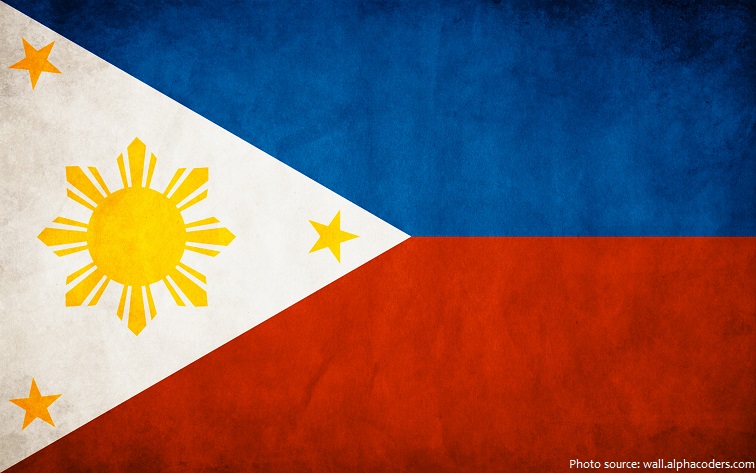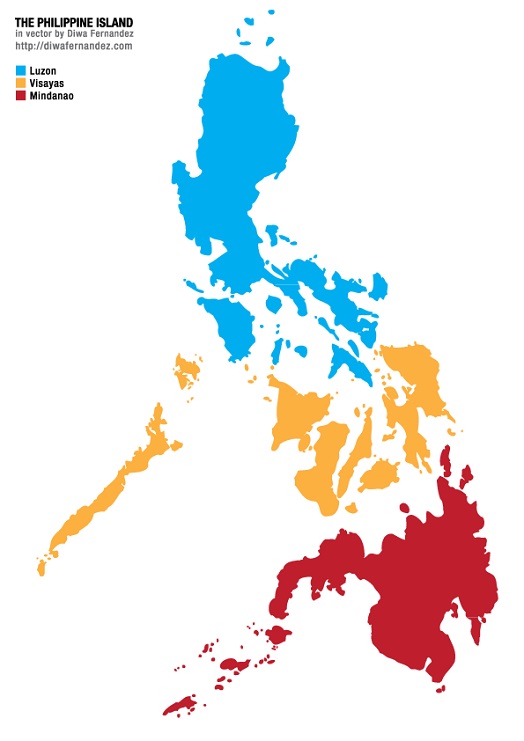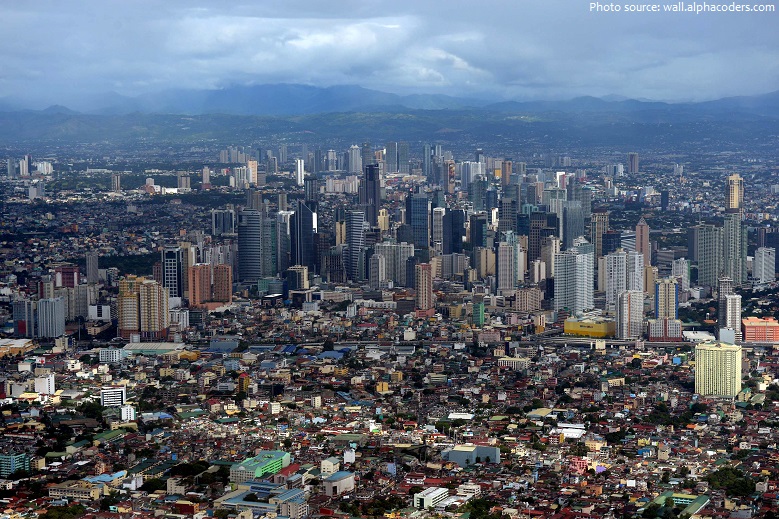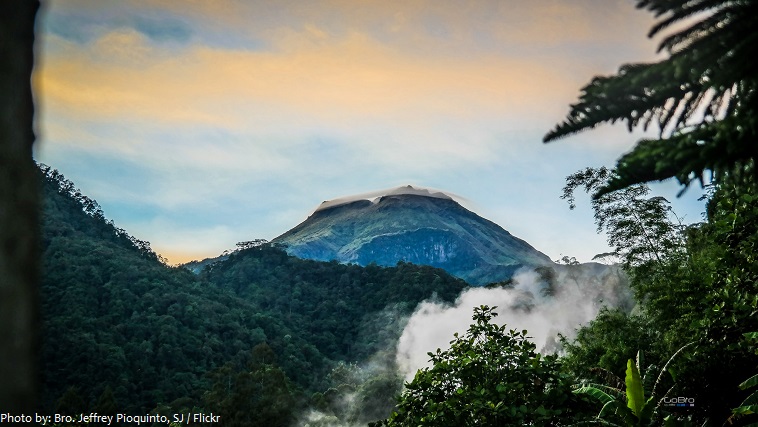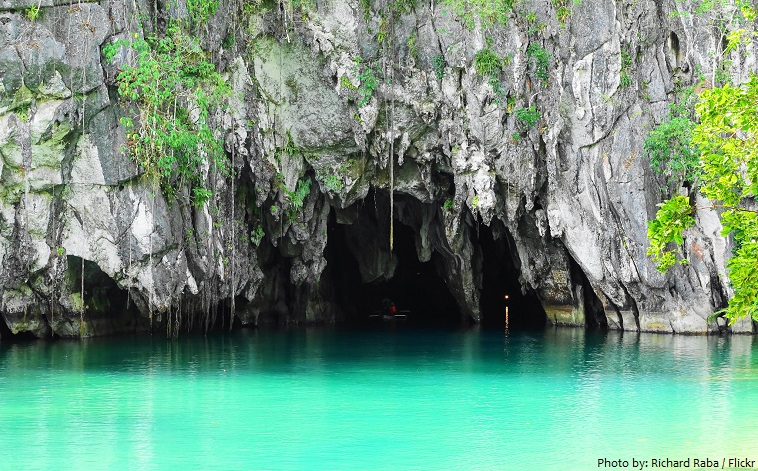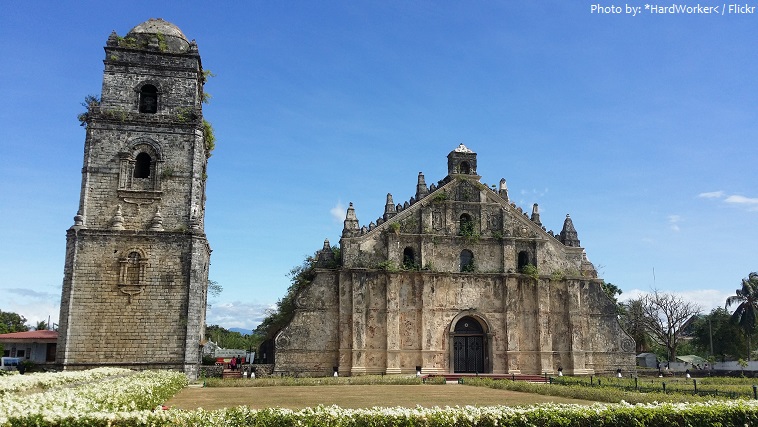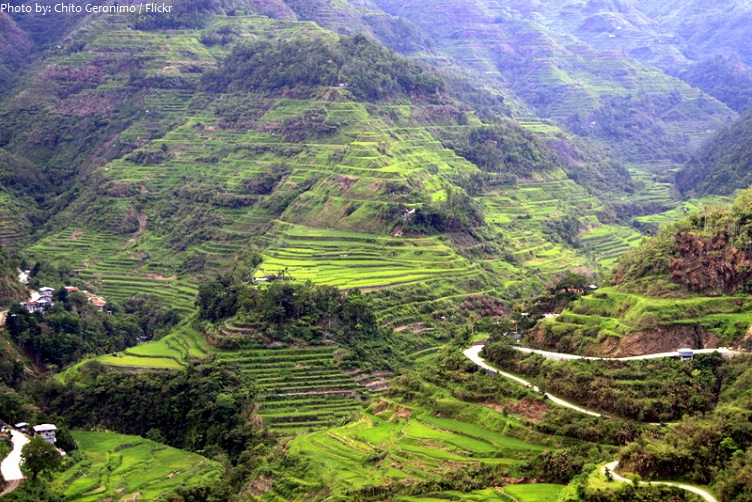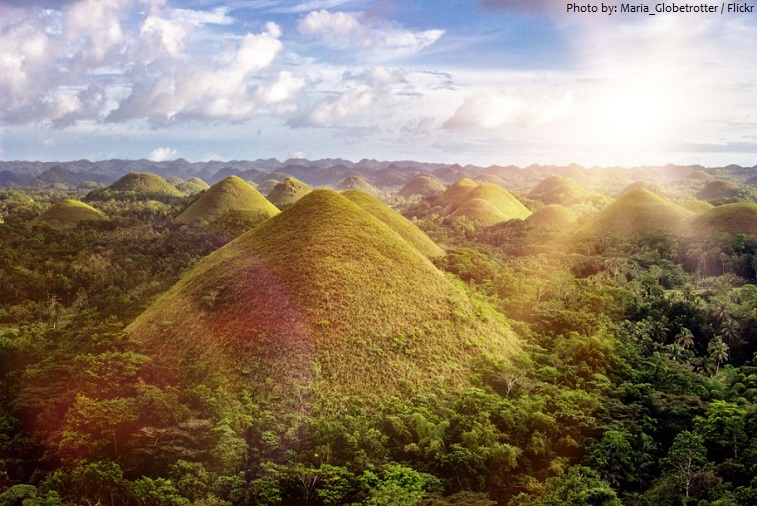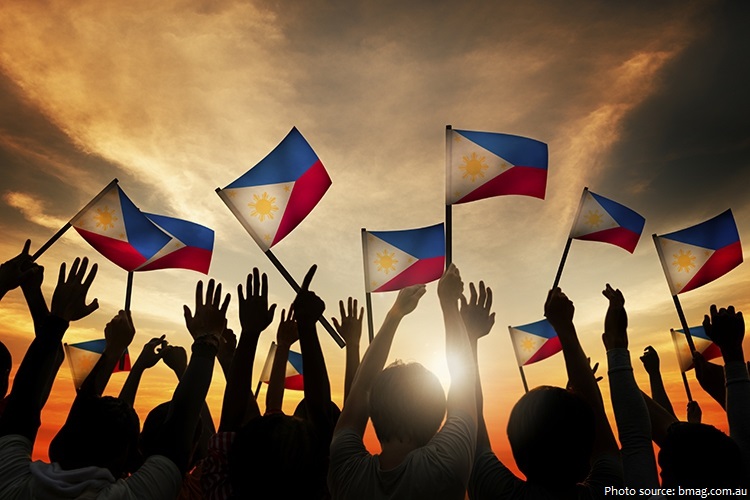The Philippines is a sovereign island country in Southeast Asia situated in the western Pacific Ocean.
The official name of the country is the Republic of the Philippines.
Bounded by the South China Sea on the west, the Philippine Sea on the east and the Celebes Sea on the southwest, the Philippines shares maritime borders with Taiwan to the north, Vietnam to the west, Palau to the east and Malaysia and Indonesia to the south.
The Philippines has two official languages, Filipino and English.
As of 1 January 2017, the population of Philippines was estimated to be 103,103,458 people. It is the eighth-most populated country in Asia and the 12th most populated country in the world.
It is the 72nd largest country in the world in terms of area with an area covering 300,000 square kilometers (115,831 square miles).
It consists of about 7,107 islands that are categorized broadly under three main geographical divisions from north to south: Luzon, Visayas, and Mindanao.
The 11 largest islands contain 95% of the total land area. The largest of these islands is Luzon at about 105,000 square kilometers (40,541 sq mi). The next largest island is Mindanao at about 95,000 square kilometers (36,680 sq mi).
Only about one third of the islands are inhabited.
Manila, the capital of the Philippines, is a densely populated bayside city on the island of Luzon, which mixes Spanish colonial architecture with modern skyscrapers.
The islands are of volcanic origin, with the larger ones crossed by mountain ranges.
Mount Apo is a large solfataric, potentially active stratovolcano in the island of Mindanao, Philippines. With an elevation of 2,954 meters (9,692 feet) above sea level, it is the highest mountain in the Philippines.
Its 36,289 kilometers (22,549 mi) of coastline makes it the country with the 5th longest coastline in the world.
The Philippines has numerous beaches.
Boracay has glaring white sand beaches and was named as the best island in the world by Travel + Leisure in 2012. In 2014, the resort island was at the top of the Best Islands in the World list published by the international magazine Condé Nast Traveler.
There are 240 protected areas in the Philippines, of which 35 have been classified as National Parks.
The Puerto Princesa Subterranean River National Park is a protected area of the Philippines. This park features a spectacular limestone karst landscape with an underground river. The park also represents a habitat for biodiversity conservation. The site contains a full mountain-to-the-sea ecosystem and has some of the most important forests in Asia. It was inscribed by UNESCO as a World Heritage Site on December 4, 1999.
Until the 2007 discovery of an underground river in Mexico’s Yucatán Peninsula, the Puerto Princesa Subterranean River was reputed to be the world’s longest underground river.
The Philippines has 6 UNESCO world heritage sites.
The Baroque Churches of the Philippines are a collection of four Spanish-era baroque churches in the Philippines, which were included in the UNESCO World Heritage List in 1993. The churches are also considered as national cultural treasures of the country. [Photo: Paoay Church]
The Banaue Rice Terraces are 2,000-year-old terraces that were carved into the mountains of Ifugao in the Philippines by ancestors of the indigenous people. The Rice Terraces are commonly referred to as the “Eighth Wonder of the World”. It is said that if the steps were put end to end, it would encircle half the globe.
The Chocolate Hills are a geological formation in the Bohol province of the Philippines. There are at least 1,260 hills but there may be as many as 1,776 hills spread over an area of more than 50 square kilometers (20 sq mi). They are covered in green grass that turns brown (like chocolate) during the dry season, hence the name. The Chocolate Hills are one of the top tourist attractions in the Philippines.
Ferdinand Magellan first landed in the Philippines in 1521. The name Philippines comes from Philip II who was the king of Spain during the 16th century when the country became a Spanish colony.
The Philippines were ceded to the U.S. in 1899 by the Treaty of Paris after the Spanish-American War.
The islands were liberated by U.S. forces in 1944-45, and the Republic of the Philippines was proclaimed in 1946, with a government patterned on that of the United States.
Independence Day is an annual national holiday in the Philippines observed on June 12, commemorating the Philippine Declaration of Independence from Spain on June 12, 1898. Since 1962, it has been the country’s National Day.
The Economy of the Philippines is the 36th largest in the world, according to 2016 International Monetary Fund statistics.
The economy is based on agriculture, light industry, and services. The country produces bananas, rice, coconuts, corn, fish, mangoes, pineapples, sugarcane, pork, and beef.
The Philippines is the world’s leading producer of coconuts.
Adobo is one of the most popular Filipino dishes and is considered unofficially by many as the national dish. It usually consists of pork or chicken, sometimes both, stewed or braised in a sauce usually made from vinegar, cooking oil, garlic, bay leaf, peppercorns, and soy sauce.
The national fruit of the Philippines is Mango.
The national flower of the Philippines is Sampaguita (species of jasmine).
The national animal of the Philippines is the Carabao.
The national bird of the Philippines is the Philippine eagle.
Modern Arnis is the Philippine national martial art and sport.
The Philippines is approximately 85 percent Christian (mostly Roman Catholic).
The Philippines has the fifth-largest Christian population in the world, with about 87 million Christians.
Depending on the method of classification, there are 125 to 170 languages in use in the Philippines, such as Tagalog, Cebuano, Ilocano, Hiligaynon, Bicolano, Waray, and Kapampangan.
